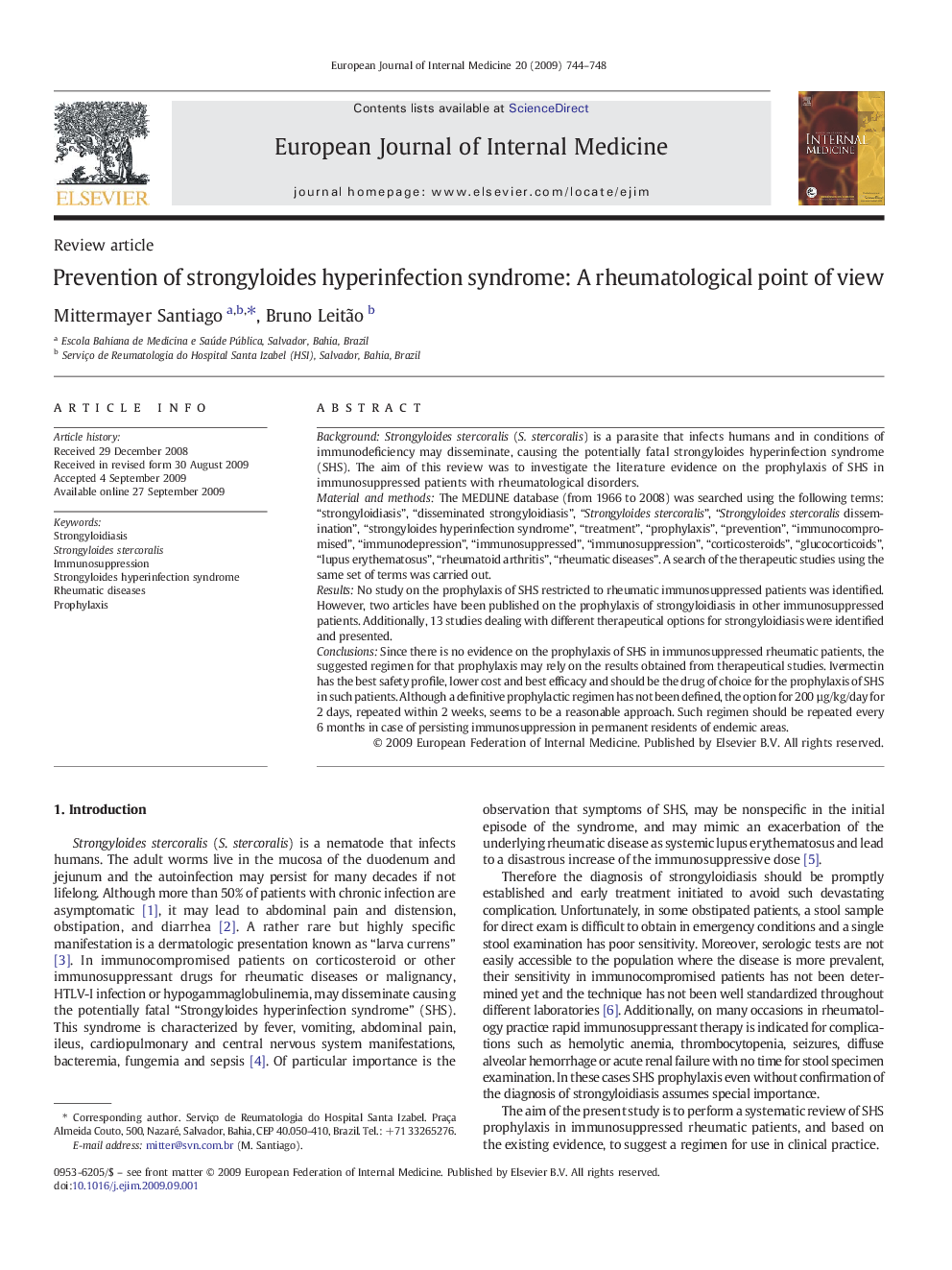| Article ID | Journal | Published Year | Pages | File Type |
|---|---|---|---|---|
| 3466760 | European Journal of Internal Medicine | 2009 | 5 Pages |
BackgroundStrongyloides stercoralis (S.stercoralis) is a parasite that infects humans and in conditions of immunodeficiency may disseminate, causing the potentially fatal strongyloides hyperinfection syndrome (SHS). The aim of this review was to investigate the literature evidence on the prophylaxis of SHS in immunosuppressed patients with rheumatological disorders.Material and methodsThe MEDLINE database (from 1966 to 2008) was searched using the following terms: “strongyloidiasis”, “disseminated strongyloidiasis”, “Strongyloides stercoralis”, “Strongyloides stercoralis dissemination”, “strongyloides hyperinfection syndrome”, “treatment”, “prophylaxis”, “prevention”, “immunocompromised”, “immunodepression”, “immunosuppressed”, “immunosuppression”, “corticosteroids”, “glucocorticoids”, “lupus erythematosus”, “rheumatoid arthritis”, “rheumatic diseases”. A search of the therapeutic studies using the same set of terms was carried out.ResultsNo study on the prophylaxis of SHS restricted to rheumatic immunosuppressed patients was identified. However, two articles have been published on the prophylaxis of strongyloidiasis in other immunosuppressed patients. Additionally, 13 studies dealing with different therapeutical options for strongyloidiasis were identified and presented.ConclusionsSince there is no evidence on the prophylaxis of SHS in immunosuppressed rheumatic patients, the suggested regimen for that prophylaxis may rely on the results obtained from therapeutical studies. Ivermectin has the best safety profile, lower cost and best efficacy and should be the drug of choice for the prophylaxis of SHS in such patients. Although a definitive prophylactic regimen has not been defined, the option for 200 µg/kg/day for 2 days, repeated within 2 weeks, seems to be a reasonable approach. Such regimen should be repeated every 6 months in case of persisting immunosuppression in permanent residents of endemic areas.
